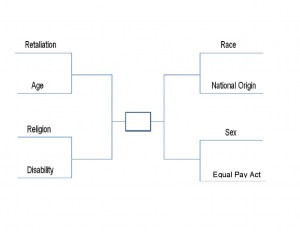March Madness has arrived. The NCCA Basketball championship tournament is one of the most anticipated sporting events of the year. Selection Sunday, the day when the teams are picked and the filled is set, has itself become a big event.
The selection process and the seeding of teams is key factor in the tournament’s success. The general consensus is that the selection committee each year does a good job. The committee meets regularly throughout the year and does it homework. They spend considerable time (months) personally evaluating the teams by watching games in person and on TV. Simply stated, the system works and is respected because it is perceived to be legitimate. There is no dispute over the inclusion of the best teams, and there is no dispute about the bad teams that miss the cut. The only selection decisions that are scrutinized relate to the few “bubble teams.” Very seldom, however, is there a public outcry over a bubble team that does not get picked. Coaches understand the process and there are few surprises.
In contrast, the BCS Championship’s selection process is unpopular. It gets challenged and picked a part. Fans do not buy into the BCS rankings and ultimately believe that the rankings are driven by desired TV ratings and the ability to sell seats to schools that travel well. Most coaches appear to be in favor of a limited playoff system.
So what can organizations facing layoffs learn from the most popular and accepted elimination process in sports? Here are a few thoughts:
- Take time to carefully plan and scrutinize the selection process. Determine what the criteria will be. How much weight will you give to each factor? Who are the decision makers? Apply the criteria consistently.
- Document the selection process so you can combat any claims that the process was biased or rigged.
- Use objective measures when possible (i.e., seniority, sales revenue, hours billed, etc). Subjective criteria such as “attitude” or being a “team player” are more likely to be challenged as pretext or phony.
- Challenge the decision makers on selections, especially as to the employees “on the bubble”. These are the employees who are more likely to initiate a lawsuit if they are terminated.
Kenneth Winkler, a shareholder at Berman Fink Van Horn, helps employers navigate the employment laws and regulations that govern the workplace.

